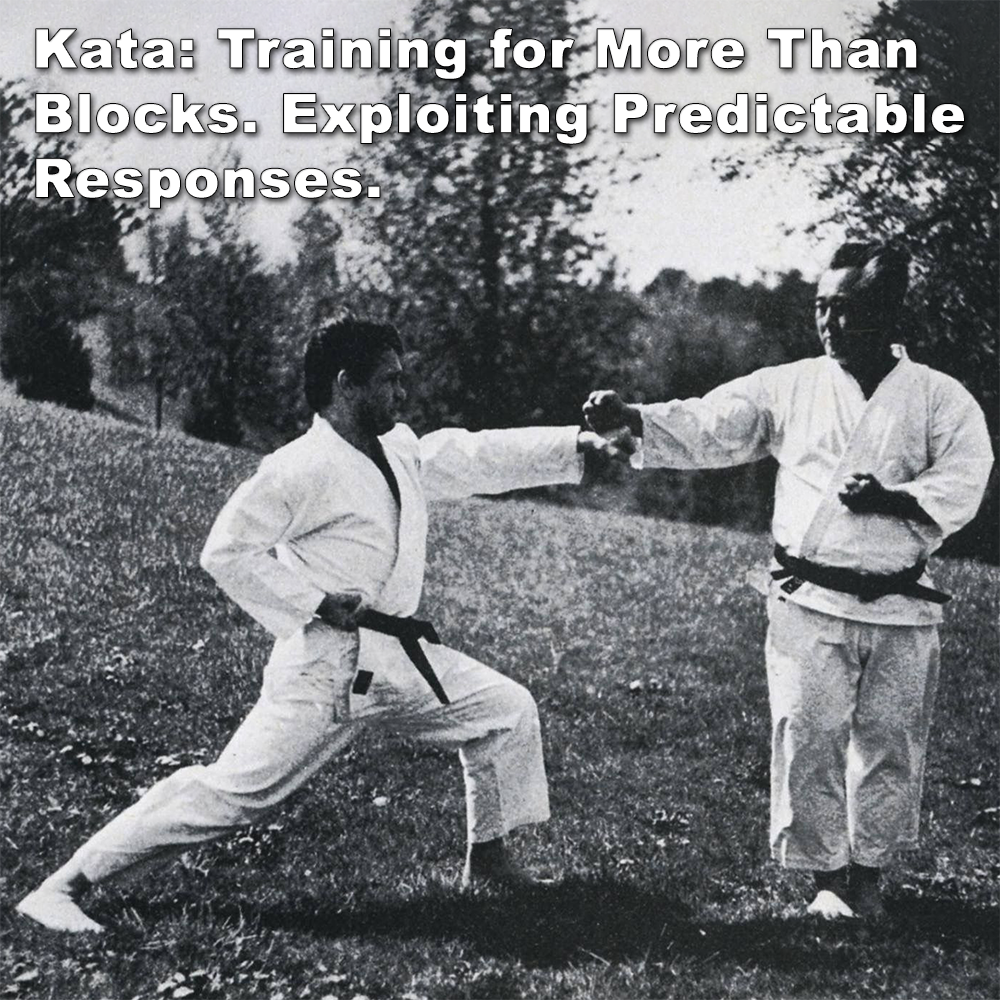
(Approx 2 minute 5 second read)
Think of the massive advantage you’d have if you knew what your opponent was going to do before it happened. You’d be able to react in an instant.
.
This is, of course, the case in pre-arranged kumite drills. Since you know the attack is coming, you can react accordingly with a ‘block’ or other technique.
.
Things get very different when you don’t know what’s coming.
.
When the pioneers of karate created the two-man drills, they did so with an understanding of human anatomy. This knowledge is embedded within the drills and, of course, the kata.
.
So, what is it that some of the kata are teaching us?
.
Embedded within the movements of kata are what can be described as ‘predictable responses’ – reflex actions, involuntary and instant unconscious reactions to a stimulus. Predictable actions an opponent will likely take when subjected to that stimulus.
.
For instance, if you suddenly punched someone in the abdomen, a predictable response would be for them to clinch the area with their hands and fold forward involuntarily. This is a simple example, but it illustrates the principle.
.
These predictable responses are precisely what many of the movements in kata aim to exploit. These movements help you to recognize your opponent’s most likely position and response after a specific attack.
.
While countless possibilities exist in a real fight, specific actions significantly increase the chance of a predictable reaction from your opponent.
.
Have you ever wondered why kata feature so many attacks targeting the body? The truth is, these aren’t always what they seem!
.
Take for example, strikes seemingly aimed at the midsection. Often, these are preceded by movements (a ‘block’?) designed to elicit a predictable response – the head coming forward perhaps.
.
The result? What appears as a body blow is actually a strategically placed strike to the head. This principle extends to attacks on other body parts too – using them to manipulate your opponent’s reactions and create openings for a decisive strike or to control the opponent.
.
You cannot totally rely on a predictable response of course, however, it’s important to consider them when analyzing your applications, it may open up additional ideas for you.
.
Every opponent will be different and may never respond the same way, failure should always be a consideration. However, some physical responses are instinctive and therefore predictable.
.
One key principle to remember is that most people instinctively move away from pain. This means your strikes and techniques should consider where your opponent will likely be after your initial impact. Don’t stop at the strike itself; visualize your follow-up movements based on this predictable reaction.
.
This focus on exploiting instinctive responses is what makes bunkai training so valuable and interesting. By incorporating these considerations into your kata practice, you bridge the gap between memorized movements and real-world application.
.
Here’s a mantra I sometimes encourage my students to think about: Predict. React. Dominate.
.
Do you work predictable reactions into your applications?
